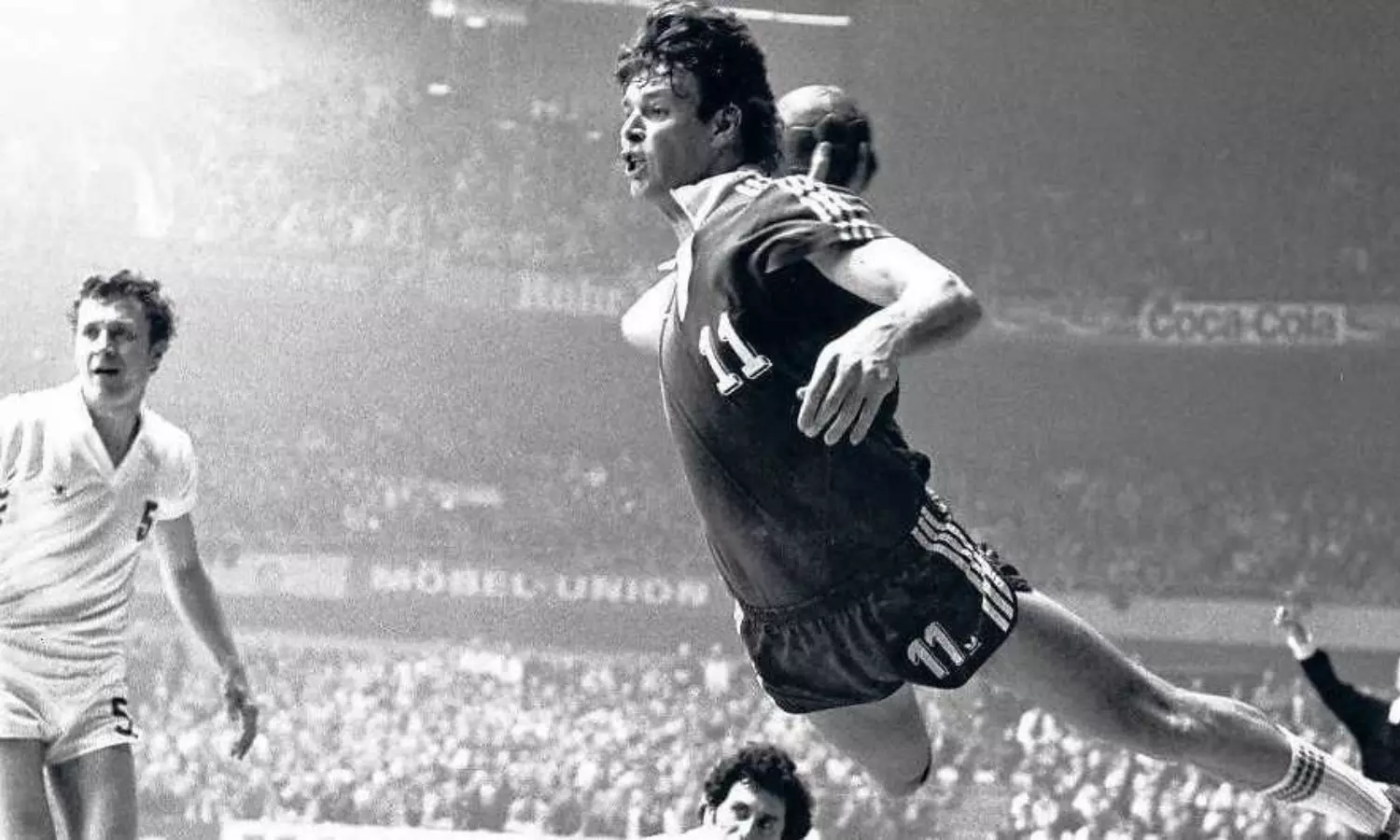Handball
History of Handball, the fastest Summer Olympics sport
Here is a look into the roots and origins of the fastest Summer Olympics sport, Handball.

Handball, the fastest sport in the Summer Olympics, remains a lesser-known sport in India till now, such that it is often confused with volleyball. But it has roots that go back a few centuries.
A fast-paced game played on an indoor court, handball has all the ingredients of a thrilling sport - all of which will be in action as the inaugural season of the Premier Handball League (PHL) begins next month.
Considered one of the oldest ball games, handball traces its history to Europe. Majorly played across Scandinavia, Italy, and Germany, handball has gone through multiple evolutions to reach its current form.
History of Handball
While there are descriptions of a ball game played with hands in ancient Greece, Rome, and France, there are no textual references to the rules of the sport. The Britannica Encyclopaedia refers to an 1887 match between the Irish champion John Lawlor and the American champion 'Casey' as the first international handball match.
The modern form of the sport was codified for the first time in 1906 when Danish Olympic medalist in shooting, Holger Nielsen, wrote the first set of handball rules.
However, 29th October 1917 is recorded as the official birthdate of handball when German sports teacher Karl Schelenz (father of modern handball), Erich Konigh, and Max Heiser published the first set of handball rules.
Later that year, on 2nd December 1917, the first official handball match was played.
There was a lot of ambiguity and confusion in the rules in the initial years and they were rewritten by Karl in 1919. In 1928, the International Amateur Handball Federation (IAHF) was formed to regulate the game.
The IAHF was successful in getting the sport to the Olympics but it was the outdoor version of the game which was played in the 1936 Munich Olympics.
The sport was absent after that till the 1968 Olympics, but the indoor format became extremely popular in the Scandinavian countries. The sport was re-introduced to the 1972 Summer Olympics in an even newer format and has been a mainstay since then.
Still majorly dominated by European countries, handball has expanded to more than 200 countries now with multiple tournaments hosted around the year.
Introduction to the sport
Modern handball is played on an indoor court measuring 40m x 20m between two teams of seven players each (six outfield players and one goalkeeper) with the eventual aim of putting the goal into the opponent's net.
Few basic rules of the game:
- Apart from the goalkeeper, no other player is allowed to touch the ball from the feet.
- After receiving the ball, players can pass, keep possession, or shoot the ball.
- While in possession, Players must dribble and can take up to three steps without bouncing the ball and are allowed to hold onto it for a maximum of three seconds.
- No attacking or defending players other than the defending goalkeeper is allowed to touch the floor of the goal area (within six meters of the goal).
History of Handball in India
The re-introduction of Handball to the 1972 Munich Olympics exposed the game to Asian countries. This was when India also adopted the game officially, even though rudimentary forms of the game had been played here from much earlier.
The first national championships were played in 1972, with Haryana defeating Vidarbha to emerge as the champions.
While handball started taking baby steps in the country, the public was introduced to the sport when it made its debut at the New Delhi Asian Games in 1982.
Indian handball teams have finished consistently on the podium at the South Asian Games but the team is yet to make a mark at the continental or world level.
With a strong showing by the women's team at the Asian Championships and the fourth-place finish of the men's team at the IHF Emerging Nations tournament, the future certainly looks bright for Indian handball.
As the first-ever franchise-based league in the sport, the PHL is around the corner, one can expect rapid growth of the sport.
The PHL will have six teams - Rajasthan Patriots, Garvit Gujarat, Maharashtra Ironmen, Golden Eagles Uttar Pradesh, Telugu Talons, and Delhi Panzers. The inaugural edition of the league is set to be held from June 8 to 25 at the Sawai Mansingh Indoor Stadium, Jaipur.
